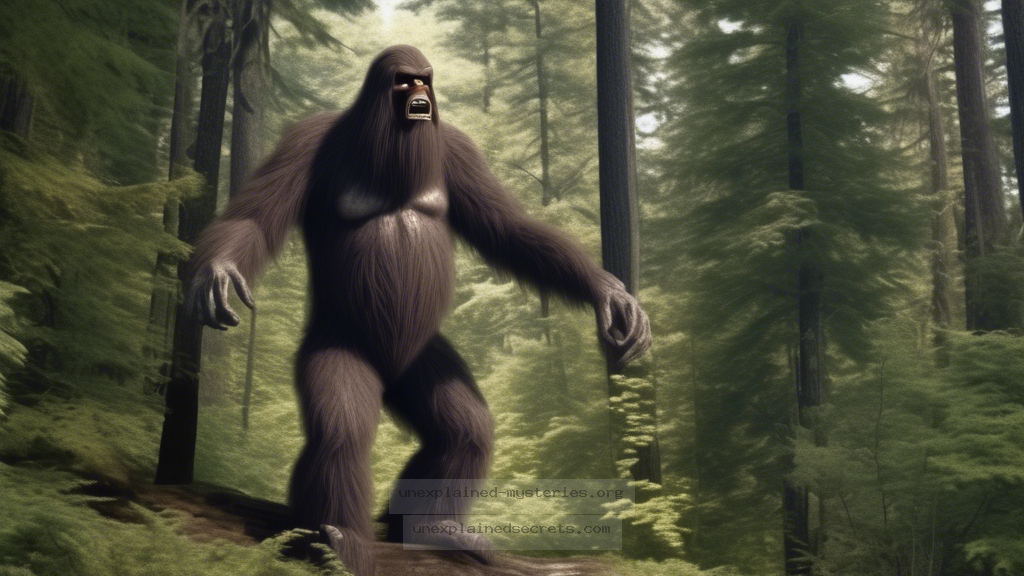What Can the Patterson-Gimlin Film Tell Us About the Existence of Bigfoot?
What Can the Patterson-Gimlin Film Tell Us About the Existence of Bigfoot?
The Patterson-Gimlin film, shot in 1967, has become one of the most debated pieces of footage in the cryptozoological community. This enigmatic 60-second film captures what appears to be a large, bipedal creature crossing a creek in Bluff Creek, California, and its authenticity has sparked discussions for decades. Why does this film matter, and what insights can it provide regarding the existence of Bigfoot? This post will delve into the historical context, core theories, and implications surrounding this pivotal moment in the study of cryptids.
Historical Context of the Patterson-Gimlin Film
The Patterson-Gimlin film was shot on October 20, 1967, by Roger Patterson and Bob Gimlin, who were on an expedition to find evidence of Bigfoot in the remote forests of Northern California. Prior to the film, Bigfoot sightings had been reported in North America since the 19th century, but the concept gained mainstream attention in the 1950s and 60s due to increasing media coverage. The film represented a significant turning point, as it was one of the first pieces of visual evidence that captured the imagination of the public and researchers alike.
In the years following the release of the film, it garnered both fervent supporters and staunch skeptics. Supporters argued that the footage was genuine, claiming it provided visual evidence of a creature long thought to be a myth. Skeptics, meanwhile, pointed to perceived flaws in the film and questioned its authenticity. The film sparked an ongoing debate that continues to this day, with numerous investigations and analyses attempting to validate or debunk its claims.
Analyzing the Footage: What Do We See?
At first glance, the Patterson-Gimlin film shows a large, hairy creature walking upright, with its arms swinging at its sides. The creature appears to have a robust build, with distinctive features such as a pronounced brow ridge and a broad chest. The quality of the film has led to numerous analyses over the years, with experts examining various aspects, including the gait of the creature, its anatomical proportions, and the surrounding environment.
One of the most compelling aspects of the footage is the creature’s movement. Unlike a human in a costume, the creature exhibits a natural gait that has been difficult to replicate, leading some researchers to believe that it may be an actual animal. For example, the way the creature turns its head and appears to look back at the camera suggests a level of awareness and intelligence consistent with a living being rather than a person in a suit.
Core Theories Surrounding the Film’s Authenticity
The debate over the authenticity of the Patterson-Gimlin film has led to several core theories being proposed. These theories range from support for the existence of Bigfoot to claims that the footage is a well-executed hoax.
- Support for Authenticity: Proponents of the film’s authenticity often cite the lack of concrete evidence for it being a hoax. The creature’s anatomical details, movement, and the context of the film’s creation suggest it could not have been easily fabricated.
- Hoax Theories: Skeptics argue that the film was staged, claiming that Patterson and Gimlin had access to a suit designed to mimic Bigfoot. Some have even suggested that they were trying to capitalize on the growing interest in Bigfoot folklore.
Comparative Analysis: Other Bigfoot Sightings
The Patterson-Gimlin film is not the only piece of evidence in the ongoing quest to prove the existence of Bigfoot. Numerous other sightings and encounters have been documented, leading to a rich tapestry of testimonies. For example, the famous 1958 tracks found in Bluff Creek sparked significant interest and led to the “Bigfoot” moniker being popularized.
| Year | Location | Type of Evidence | Summary |
|---|---|---|---|
| 1958 | Bluff Creek, CA | Footprints | Tracks measuring up to 24 inches long were discovered, leading to media coverage. |
| 2000 | North Carolina | Audio recordings | Researchers captured strange vocalizations in the woods, attributed to Bigfoot. |
| 2008 | Georgia | Body claimed to be Bigfoot | A supposed Bigfoot body was revealed, later determined to be a hoax. |
While the Patterson-Gimlin film remains a cornerstone of Bigfoot evidence, it is essential to consider these other encounters when analyzing the creature’s existence. Each piece of evidence adds to the narrative, creating a broader understanding of the phenomenon.
Practical Implications: What Does This Mean for Bigfoot Research?
The implications of the Patterson-Gimlin film extend beyond mere curiosity; they affect ongoing research efforts and public interest in cryptozoology. The enduring debate encourages amateur and professional researchers alike to explore remote areas and document their findings, leading to a growing body of evidence. Researchers often seek to replicate the film’s conditions, hoping to capture similar footage or gather physical evidence, such as hair samples or footprints.
However, the film also serves as a cautionary tale. The hype surrounding Bigfoot can lead to misinformation and sensationalism. Researchers must adopt a scientific approach, documenting their methods and findings transparently, to build credibility within both the scientific community and the public.
Alternative Perspectives: The Skeptics’ Viewpoint
Critics of the Patterson-Gimlin film often highlight several points that they believe undermine its authenticity. For instance, they argue that the film’s low resolution makes it difficult to draw definitive conclusions about the creature’s anatomy. They also point to the potential for human error in interpreting the creature’s movements, suggesting that what appears to be a natural gait could simply be a product of the filming technique.
Moreover, some skeptics emphasize the lack of physical evidence that could corroborate the film’s claims. Despite numerous sightings, no conclusive remains or verified biological samples of Bigfoot have been found. This absence of evidence adds weight to the skeptics’ argument that the creature may not exist at all.
Common Misconceptions and Clarifications
The Patterson-Gimlin film has been surrounded by misconceptions that can cloud the discussion. One common belief is that the film definitively proves the existence of Bigfoot. While it is a compelling piece of evidence, it is essential to approach it within the larger context of Bigfoot research.
Another misconception is that all Bigfoot sightings are hoaxes. While some have been proven to be fabricated, many credible witnesses have provided compelling accounts that deserve consideration.
Best Practices for Investigating Bigfoot Claims
For those interested in investigating claims related to Bigfoot, there are several best practices to consider. First, researchers should approach each claim with a critical eye, verifying the credibility of the witness and the context of the sighting. Engaging with experts in various fields can provide valuable insights and help avoid common pitfalls.
Additionally, documenting findings meticulously is crucial. When investigating sightings, researchers should note the time, location, weather conditions, and any physical evidence discovered. This thorough documentation can help build a more credible case and contribute to the overall body of knowledge regarding Bigfoot.
Future Developments and Ongoing Research
The interest in Bigfoot shows no signs of waning, and ongoing research continues to evolve. Advances in technology, such as drones equipped with infrared cameras and sound recording devices, provide new avenues for investigation. Researchers are also utilizing social media and online platforms to share their findings and engage with the public, fostering a community of enthusiasts and skeptics alike.
As more data is collected, the hope is that conclusive evidence may eventually emerge, either supporting or debunking the existence of Bigfoot. For now, the Patterson-Gimlin film remains a pivotal piece of the puzzle, serving as a springboard for further exploration into the mysteries of the unknown.
Conclusion: The Enduring Legacy of the Patterson-Gimlin Film
The Patterson-Gimlin film continues to be a focal point in the discussion surrounding Bigfoot’s existence. It encapsulates the allure of cryptozoology and the human fascination with the unexplained. Whether viewed as a genuine piece of evidence or a meticulously crafted hoax, the film has spurred countless investigations, discussions, and theories. As researchers and enthusiasts continue to explore this enigma, the film serves as a reminder of the mysteries that still lie hidden in the shadows of our world.
Ultimately, engaging with the Patterson-Gimlin film and the broader Bigfoot narrative challenges us to question our understanding of the natural world and the limits of our knowledge. In the quest to uncover the truth, each piece of evidence adds to the tapestry of human curiosity and exploration, inviting us to keep searching for answers in the uncharted territories of cryptozoology.
Other Articles
Recent Posts
- What Happened to Flight MH370? The Conspiracy Theories That Still Haunt Us
- What Secrets Lurk Within the Walls of the Infamous Trans-Allegheny Lunatic Asylum?
- What Evidence Supports the Existence of Bigfoot in the Pacific Northwest?
- What Happened to the Indus Valley Civilization? Unraveling the Mysteries of Ancient Urban Life
- Can Telepathy Be Scientifically Proven Through Laboratory Evidence?







